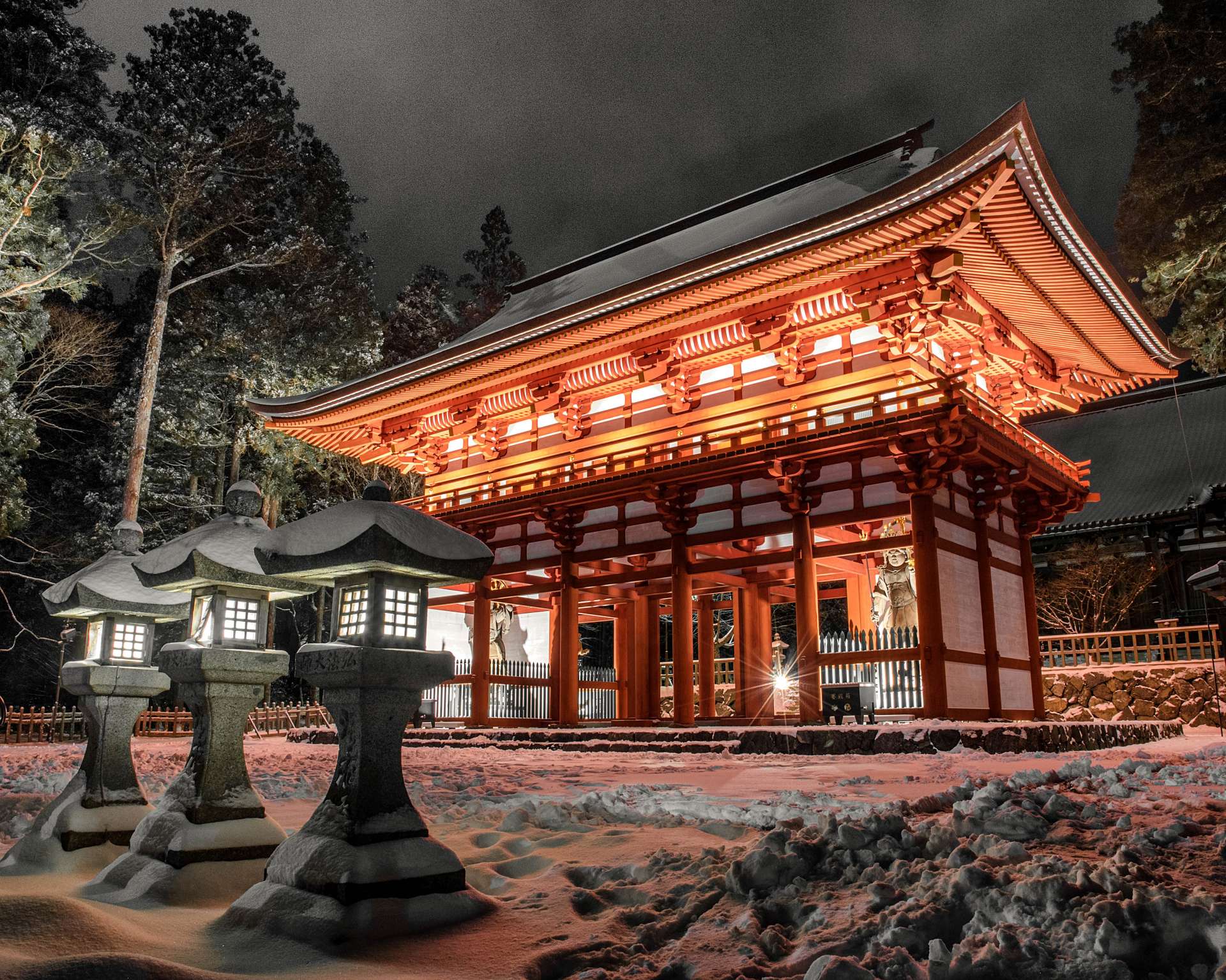
Trace the endless footsteps of time at the scenic and sacred Koyasan
Last update
Koyasan is a sprawling Japanese Buddhist mecca that’s lined with 117 different temples, including the head temple of the Koyasan Shingon Sect, Kongobu-ji Head Temple. Founded in the early Heian Period by the great Koyasan Shingon Priest Kukai, it has been worshipped by visitors over the past 1,200 years. The entire mountain was registered as a UNESCO Cultural World Heritage Site in 2004, as part of the Sacred Sites and Pilgrimage Routes in the Kii Mountains.
The main pilgrimage route into sacred ground
Choishi-michi—Koyasan’s main pilgrimage route—stretches from the town of Kudoyama to the Konpon Daito pagoda in the Danjo Garan Sacred Temple Complex. Along the path, you’ll find 180 different stone pillars to guide you deeper into the holy site. Each is placed 109 meters from the previous one—the name “choishi” is a reference to this—And each pillar is carved with Sanskrit characters and a marker displaying the distance from the Danjo Garan.
A trail of roughly 22 kilometers will take you from Jison-in Temple in Kudoyama to the Konpon Daito pagoda. With so much natural beauty along the way, this spot comes highly recommended as a place to enjoy a leisurely hike.
Along the route, you’ll find plenty of photogenic spots to visit, including three sacred rocks (Kagami-ishi, Kesakake-ishi, and Oshiage-ishi), a lush bamboo forest, and an observatory that overlooks the scenic Kinokawa Plain. The area has seen countless visitors since the trail first opened, making for a perfect destination for you to create a few memories of your own.
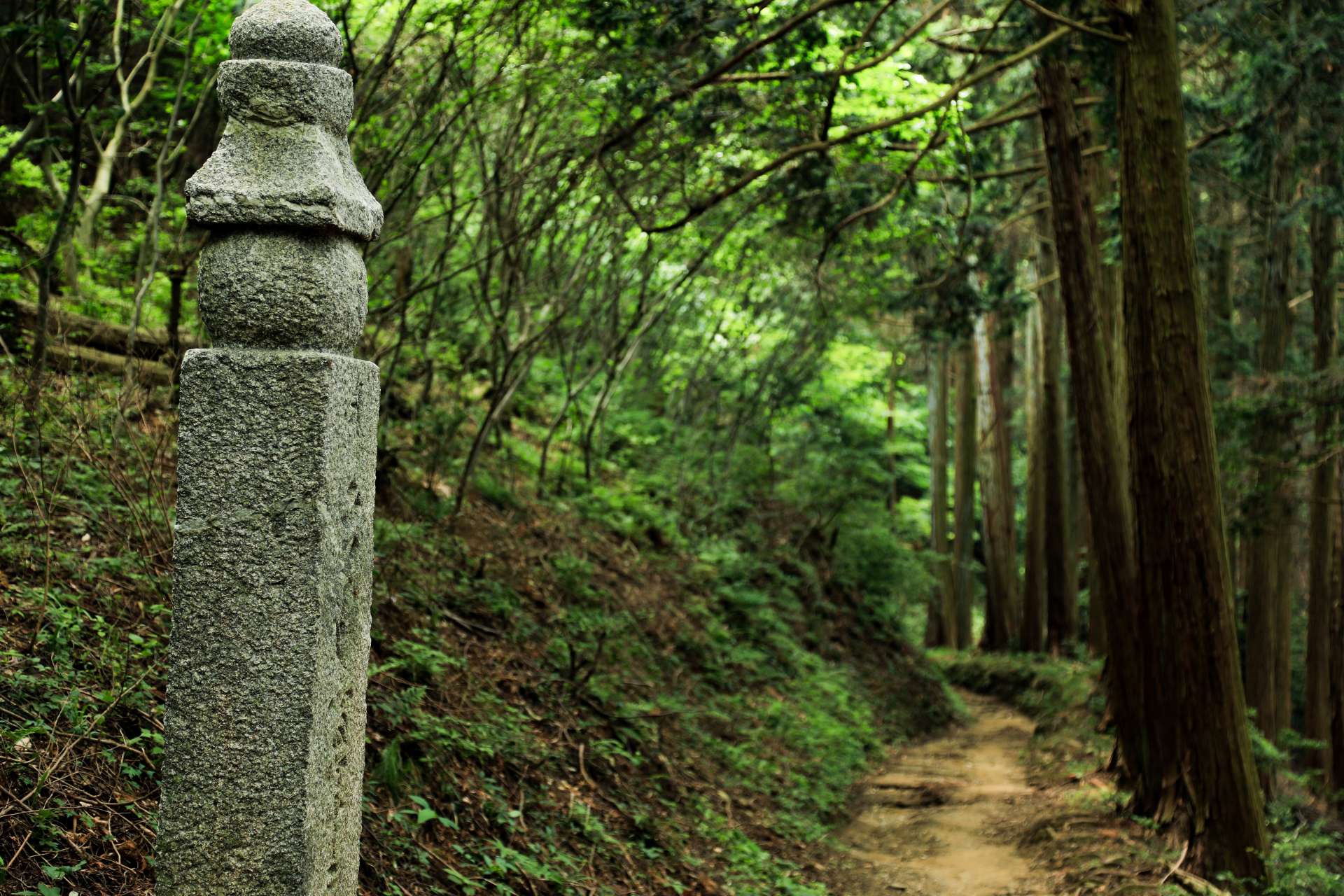
Choishi are stone pillars that mimic the shape of a gorinto, or five-tiered pagoda. They were originally made of wood but can now be seen in this stone construction popularized during the Kamakura period (1185-1333).
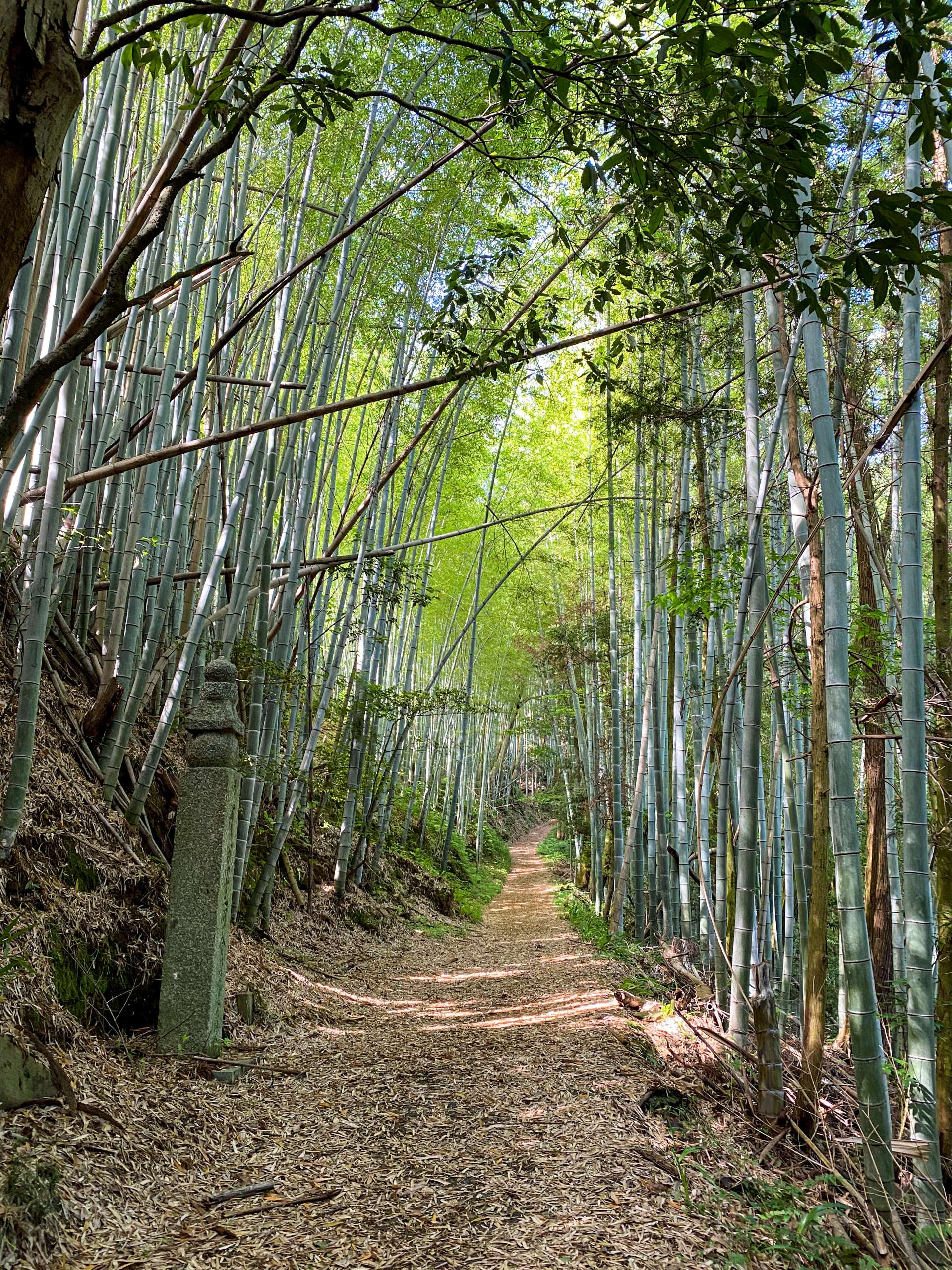
The Great Priest Kukai once walked these same trails time and time again.
- Site Name
- Koyasan Choishi-michi
- Telephone
- 0736-54-2019 (Koyasan Choishi-michi Kataribe no Kai Office)
Famous temples along the way with ties to the great priest
Visitors to Choishi-michi will find a number of famous temples with deep-rooted ties to the Great Priest Kukai.
Of particular note is Jison-in Temple, the temple considered the starting point of the pilgrimage route where the priest’s mother, Tamayori Gozen, is said to have once lived before her passing. Kukai is said to have made this the final resting place for his mother’s spirit, earning it the nickname nyonin koya (“Koyasan for women”) and the attention of many women who come to pray.
Niutsuhime-jinja Shrine is said to enshrine Niutsuhime-no-Okami, revered as the younger sister of Amaterasu-Omikami and said to be the goddess who bestowed Kukai with the grounds of Koyasan. Also enshrined here is Takanomiko-no-Okami, the child of Niutsuhime said to have led Kukai to Koyasan. Built some 1,700 years ago, this shrine is the head of all Niu Shrine locations in Japan. In the past, the double torii gate in the middle of Choishi-michi was the original entrance as people would make their way to Koyasan after worshipping at Niutsuhime-jinja Shrine.
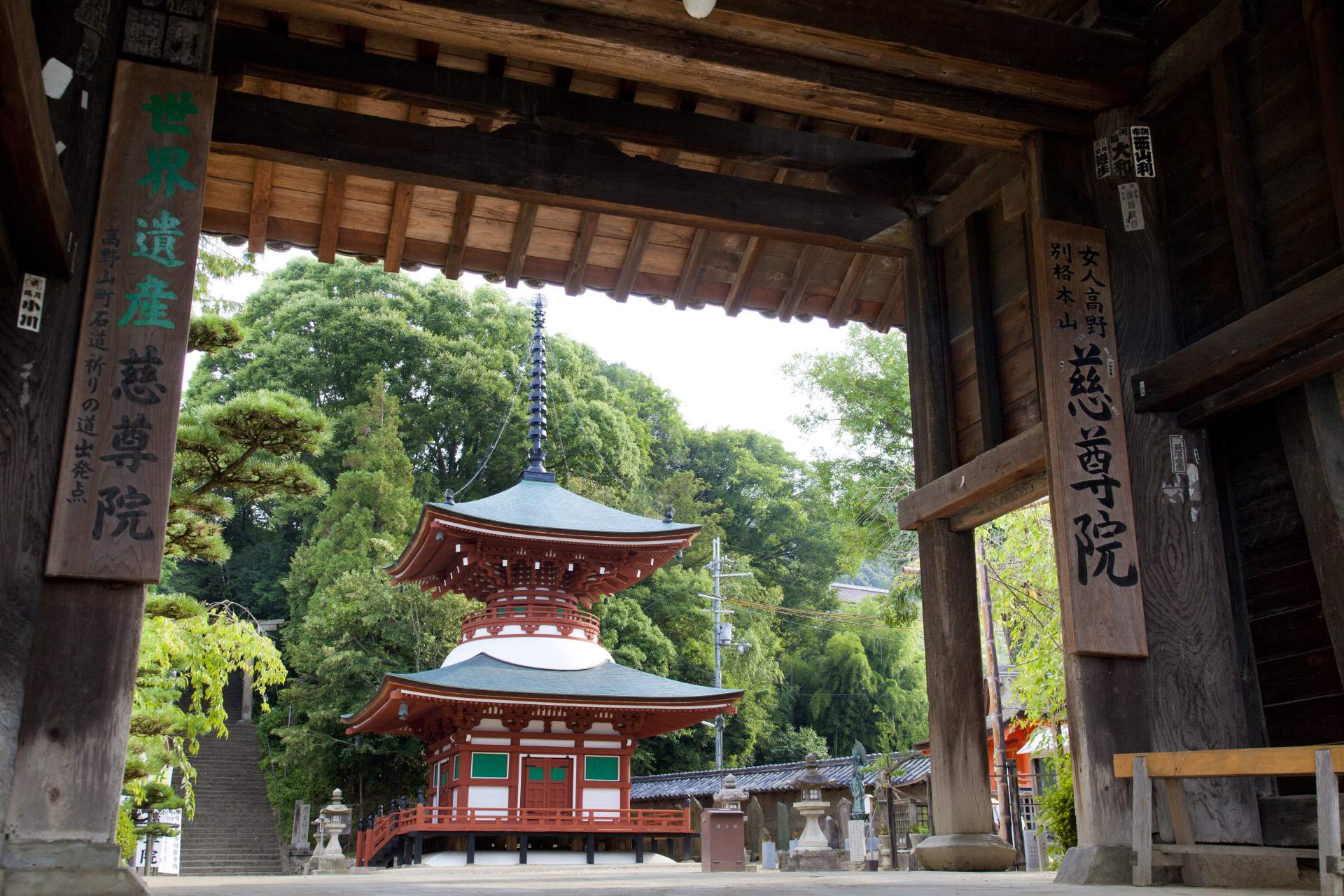
Jison-in Temple, known for the sacred statue of a seated Maitreya Buddha. This spot is especially popular with women praying for children or safe childbirth.
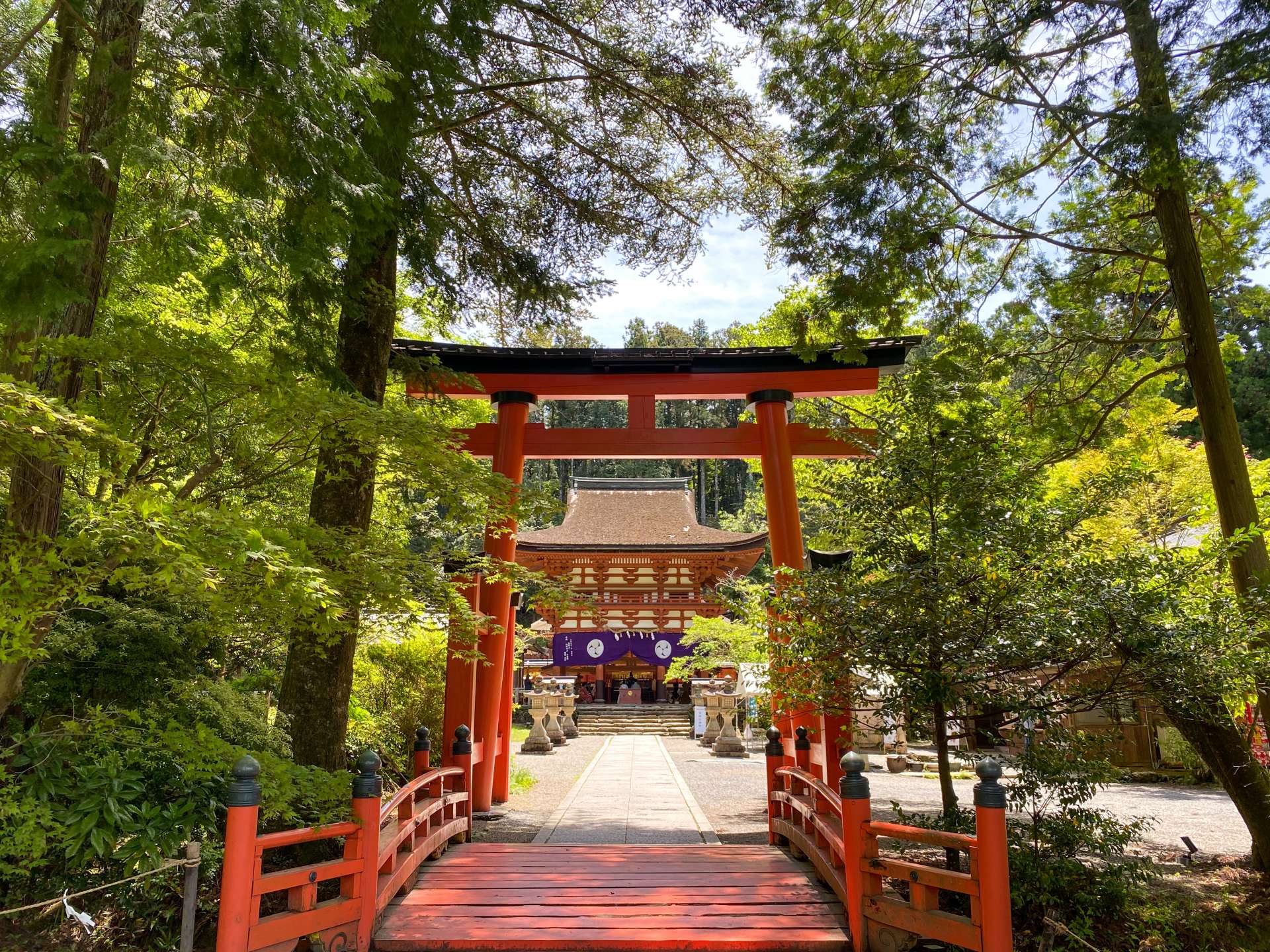
The tower gate at Niutsuhime-jinja Shrine. It was built in the Muromachi Period (1336-1573) in the irimoya-zukuri style with a thatched roof fashioned from hinoki (Japanese cypress) bark.
- Site Name
- Jison-in Temple
- Postal Code
- 648-0151
- Address
- 832 Jison-in, Kudoyama-cho, Ito-gun, Wakayama
- Hours
- 8:00 a.m. to 5:00 p.m.
- Closed
- Open every day
- Admission
- Free
- Telephone
- 0736-54-2214
- Access
- About a 25-minute walk from Nankai Koya Line Kudoyama Station.
- Site Name
- Niutsuhime-jinja Shrine
- Postal Code
- 649-7141
- Address
- 230 Kamiamano, Katsuragi-cho, Ito-gun, Wakayama
- Hours
- Free to visit any time (visitor’s center open from 8:45 a.m. to 4:30 p.m.).
- Closed
- Open every day
- Admission
- Free
- Telephone
- 0736-26-0102
- Access
- From JR Kaseda Station, take the Katsuragi Community Bus for about 30 min, then get off at the Niutsuhime-jinja mae bus stop.
Danjo Garan and Kongobu-ji Head Temple : The Heart of Koyasan
Pass the main gate that serves as the entrance into Koyasan, and you’ll find the first of two sacred sites, the Danjo Garan. Inside stands the Kondo (“Golden Hall”)—the central hall on the mountain—as well as the 48.5 meter-high Konpon Daito pagoda that represents the philosophy of Koyasan Shingon Esoteric Buddhism, and nineteen other various halls nearby. It’s said that the Great Priest Kukai created a space here that expressed a realm of mandala ideology based on esoteric thought.
Progress further past the Danjo Garan, and you’ll find yourself at Kongobu-ji Head Temple, the head temple of Koyasan Shingon Buddhism, with its many halls. Inside its main hall sits the Ohiroma Room, a vast tatami-floored space which features a fusuma painting by the Kano school. In addition, you won’t want to miss Banryutei, the largest rock garden in Japan, built to commemorate 1,150 years since the Great Priest Kukai entered eternal meditation.
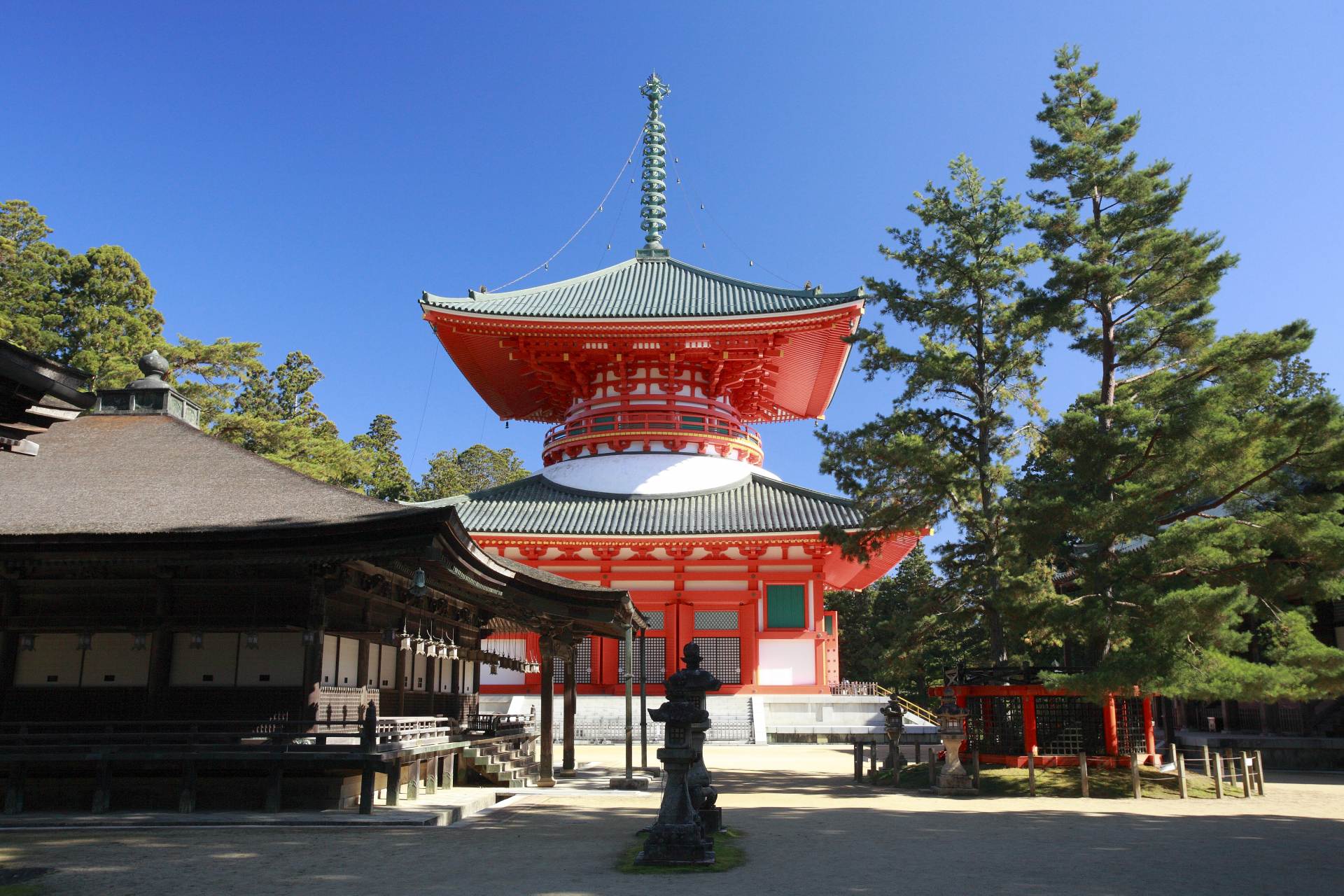
The Konpon Daito pagoda towering over the Danjo Garan temple complex was built as a training base for The Great Priest Kukai, and is said to be the first two-tiered “tahoto” style pagoda in Japan.
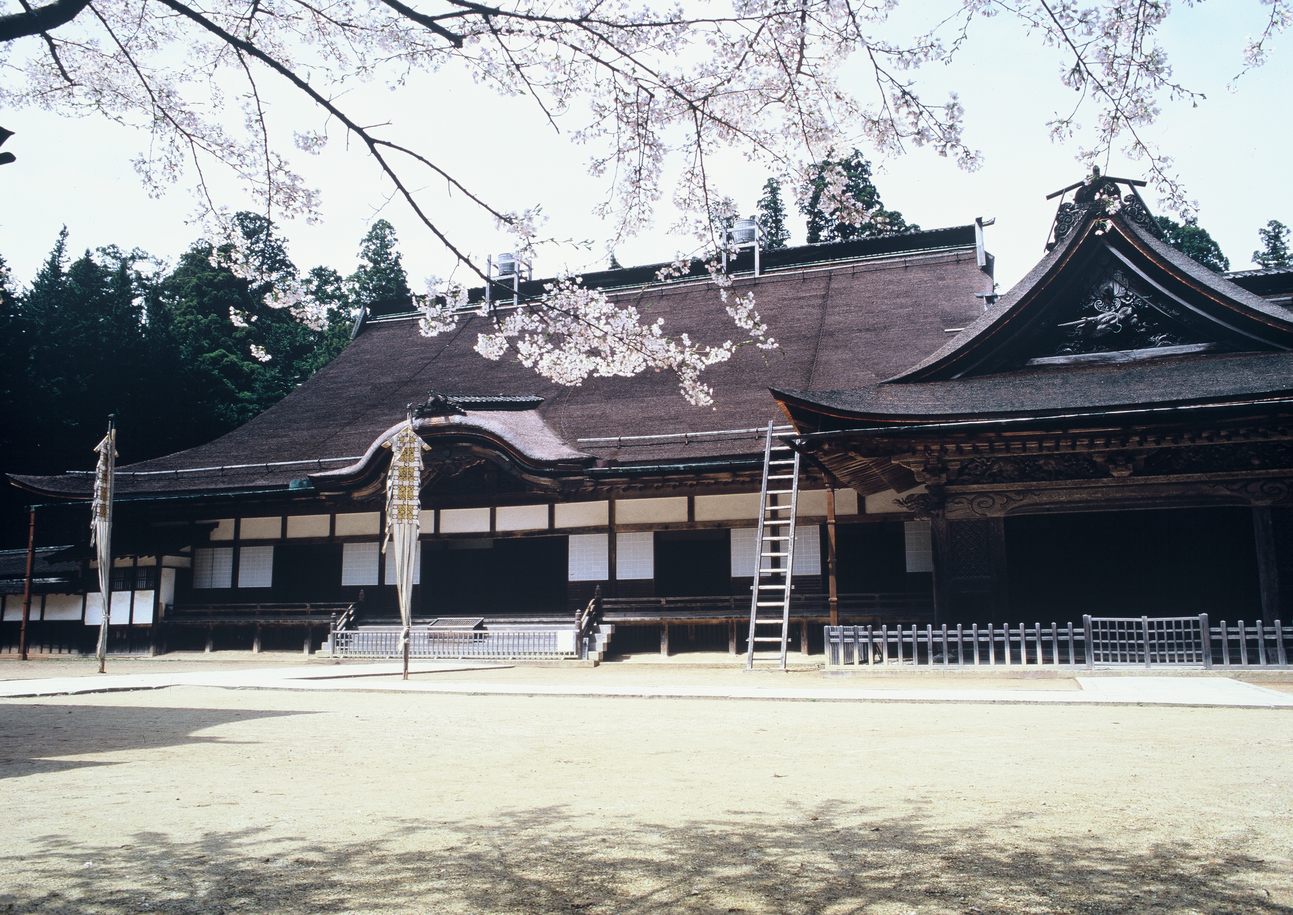
Kongobu-ji Head Temple has been lost to fires a number of times. The current building was rebuilt in 1863.
- Site Name
- Danjo Garan Sacred Temple Complex
- Postal Code
- 648-0211
- Address
- 152 Koyasan, Koya-cho, Ito-gun, Wakayama
- Hours
- Open all day; the Kondo (“Golden Hall”) and Konpon Daito pagoda are open from 8:30 a.m. to 5:00 p.m. (reception area open until 4:30 p.m.)
- Closed
- Open every day
- Admission
- Both the Kondo and Konpon Daito pagoda require an entry fee of 500 yen (each)
- Telephone
- 0736-56-2011 (Kongobuji Temple)
- Access
- From the Nankai Koya Line Koyasan Station, take the Nankai Rinkan Bus for about 14 min. and get off at the Kondo-mae bus stop.
- Site Name
- Kongobu-ji Head Temple
- Postal Code
- 648-0294
- Address
- 132 Koyasan, Koya-cho, Ito-gun, Wakayama
- Hours
- 8:30 a.m. to 5:00 p.m. (admission allowed until 4:30 p.m.)
- Closed
- Open every day
- Admission
- Entry fee 1,000 yen (300 yen for elementary school students)
- Telephone
- 0736-56-2011
- Access
- From the Nankai Koya Line Koyasan Station, take the Nankai Rinkan bus for about 11 minutes and get off at the Kongobuji-mae bus stop.
The sacred ground where the Great Priest Kukai entered eternal meditation
Along with the Danjo Garan, Okuno-in is considered one of the two most sacred areas in Koyasan. Kukai is said to have first come to enter eternal meditation here in the year 835, and it also serves as the site of his mausoleum. Here you’ll find a long stretch from the first bridge to the final mausoleum that’s dotted with over 200,000 stone memorials, as well as thousand-year-old cedar trees that hug this mystic walk.
It is said that at the mausoleum, Kukai remains in an eternal state of meditation from which he continues to help all people who pray to him for guidance and support. In front of the mausoleum, you’ll find a temple bridge in front of the holiest site. It is customary to pay your respects and say a prayer before you step across.
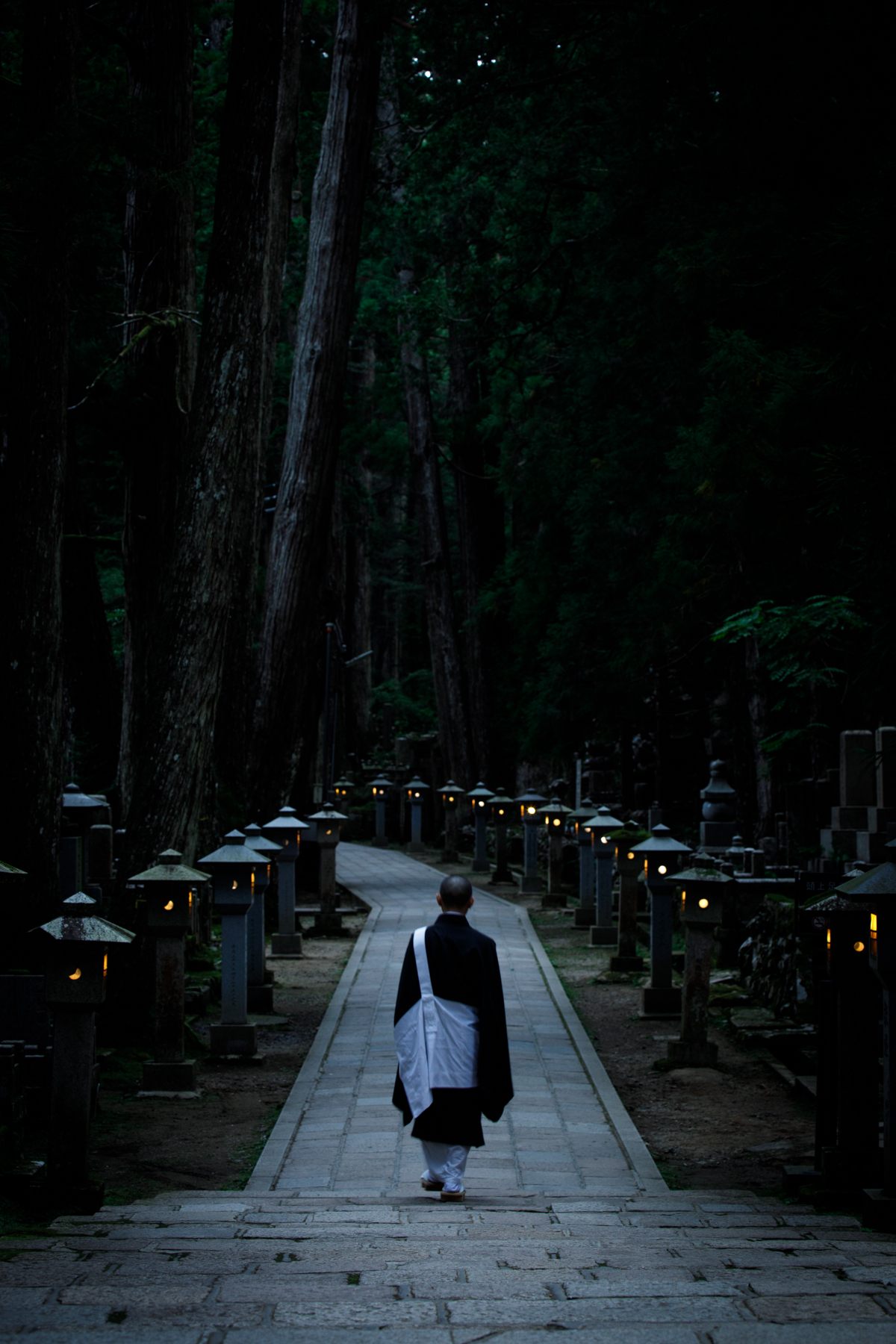
The sacred ground wrapped in a majestic air.
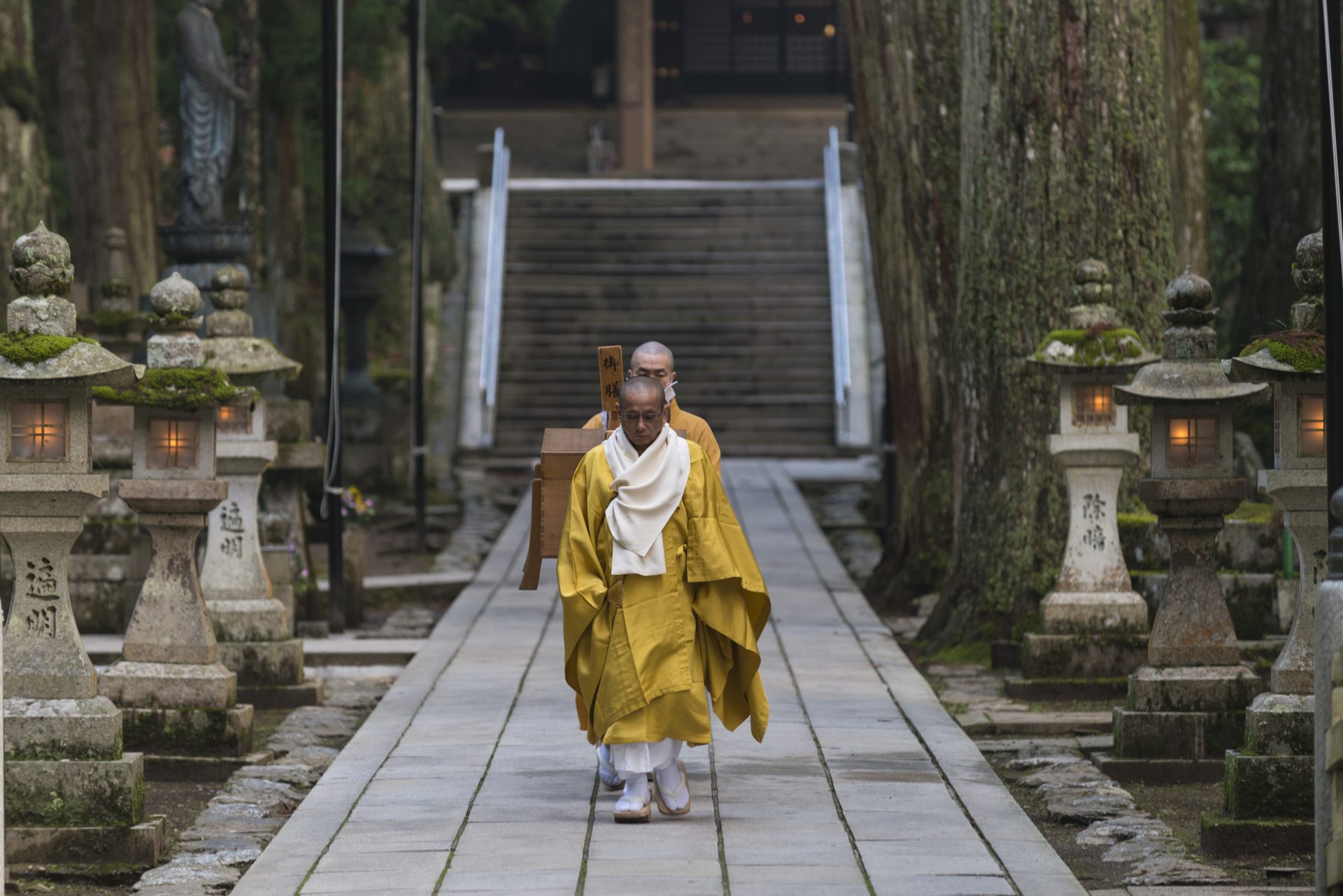
1,200 years after the Great Priest Kukai entered eternal meditation here, the custom of shoshingu ceremony, in which symbolic meals are served twice a day to the mausoleum is still performed.
- Site Name
- Okuno-in
- Postal Code
- 648-0294
- Address
- 550 Koyasan, Koya-cho, Ito-gun, Wakayama
- Hours
- Open all day. The Torodo Hall (“Hall of Lanterns") is open from 6:00 a.m.-to 5:00 p.m., and reception for memorial services is available from 8:30 a.m. to 2:30 p.m.)
- Closed
- Open every day
- Admission
- Free
- Telephone
- 0736-56-2011 (Kongobu-ji Head Temple)
- Access
- From Koyasan Station on the Nankai Koya Line, take the Nankai Rinkan bus for approx. 20 minutes, and get off at the Okuno-in-mae bus stop. The mausoleum is about a 15-minute walk from the bus stop.
Rediscover the old-world Japanese aesthetic coveted in modern times
Many visitors like to commemorate their trip to Koyasan with a stay at temple lodgings, known as shukubo. Of the 117 temples on the mountain, 51 of them have shukubo accommodations available for your stay. A singular experience unlike any hotel, staying at the temple will give you exclusive access to see the ceremonies, partake in meals, and get a taste of temple life up close.
Come for a stay, and you’ll experience such activities as early morning services in front of the principal image, and“Ajikan”, a style of breathing and meditation based in the Koyasan Shingon Buddhist training. You’ll alsostill your heart and mind by copying sutras, giving you a chance to brush up against the real traditions and deep culture of Koyasan.
Another special highlight of a shukubo stay is a chance to enjoy shojin ryori, or traditional Buddhist cuisine—a full tapestry of delicate dishes prepared without using any meat or fish.
Please do note that this is primarily a temple experience, not a hotel. You will be expected to be polite, and to follow the customs as best you can. With that in mind, this is a special chance to step away from the hustle and bustle of everyday life, feel the old-world heartbeat of Japan and steal yourself away in a holy Buddhist site.
Quiet your mind and discover your true self in a much-needed reset from the stress of the modern age.
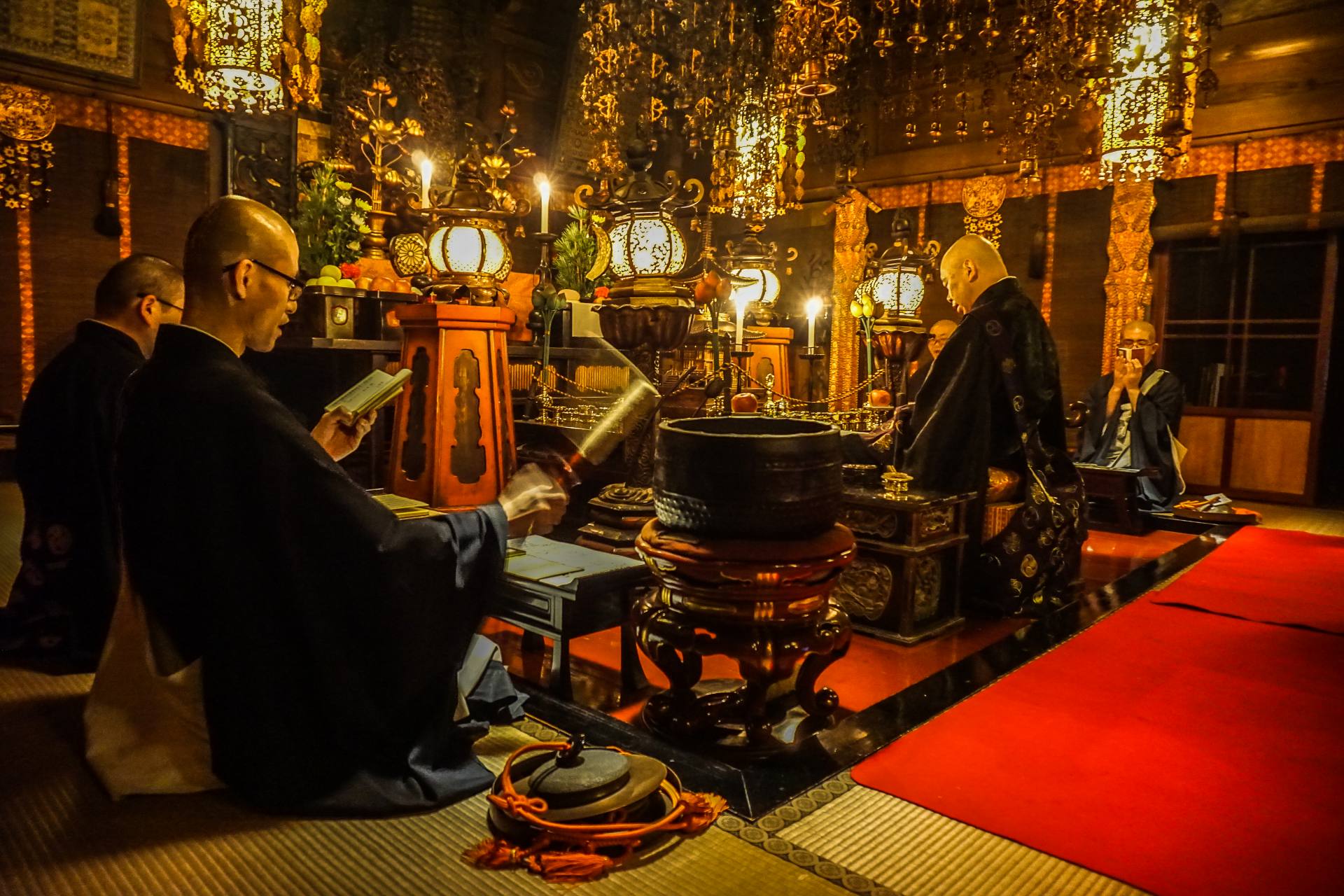
Begin each day chanting sutras and taking part in prayer services.
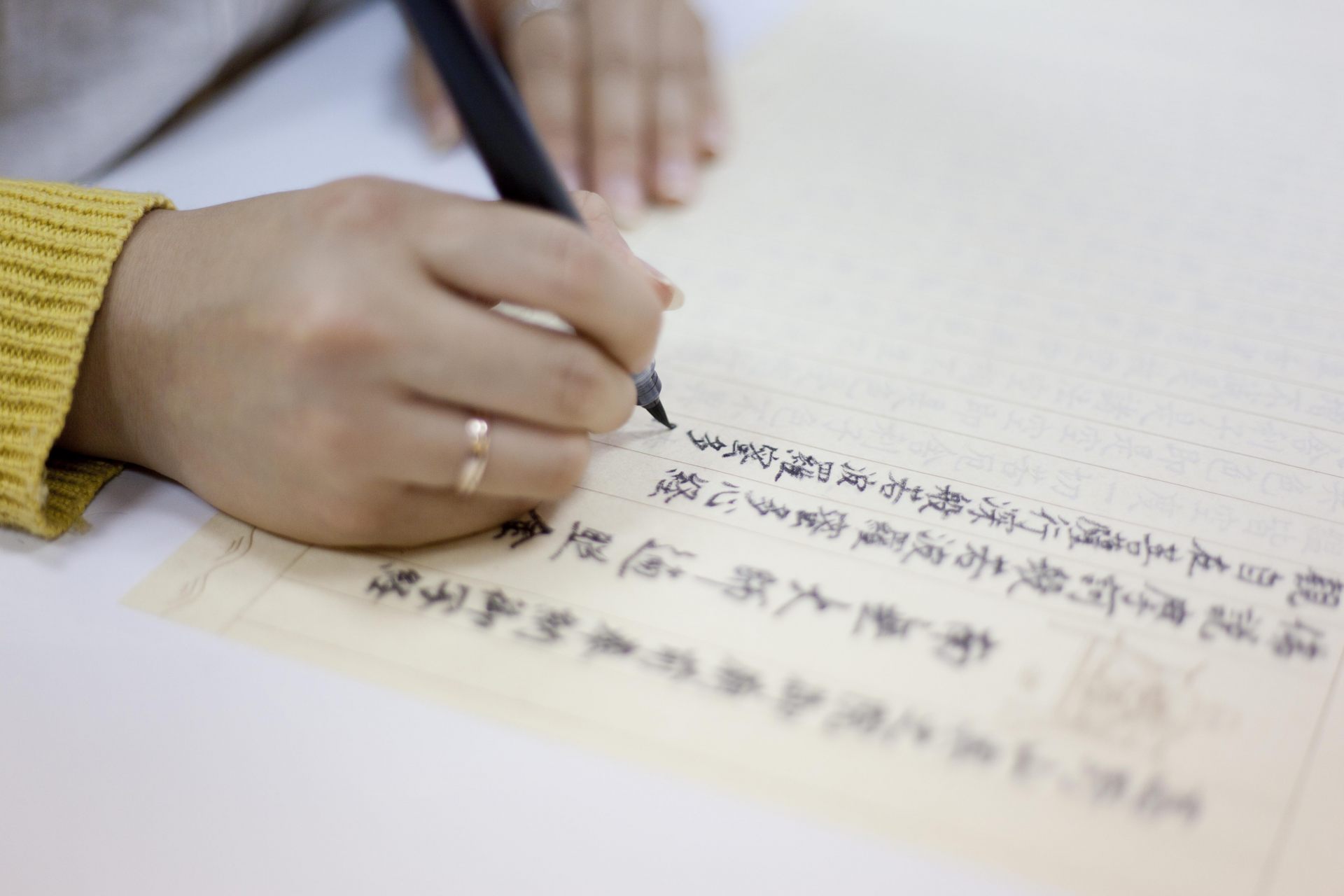
Clear your mind and focus by copying sutras.
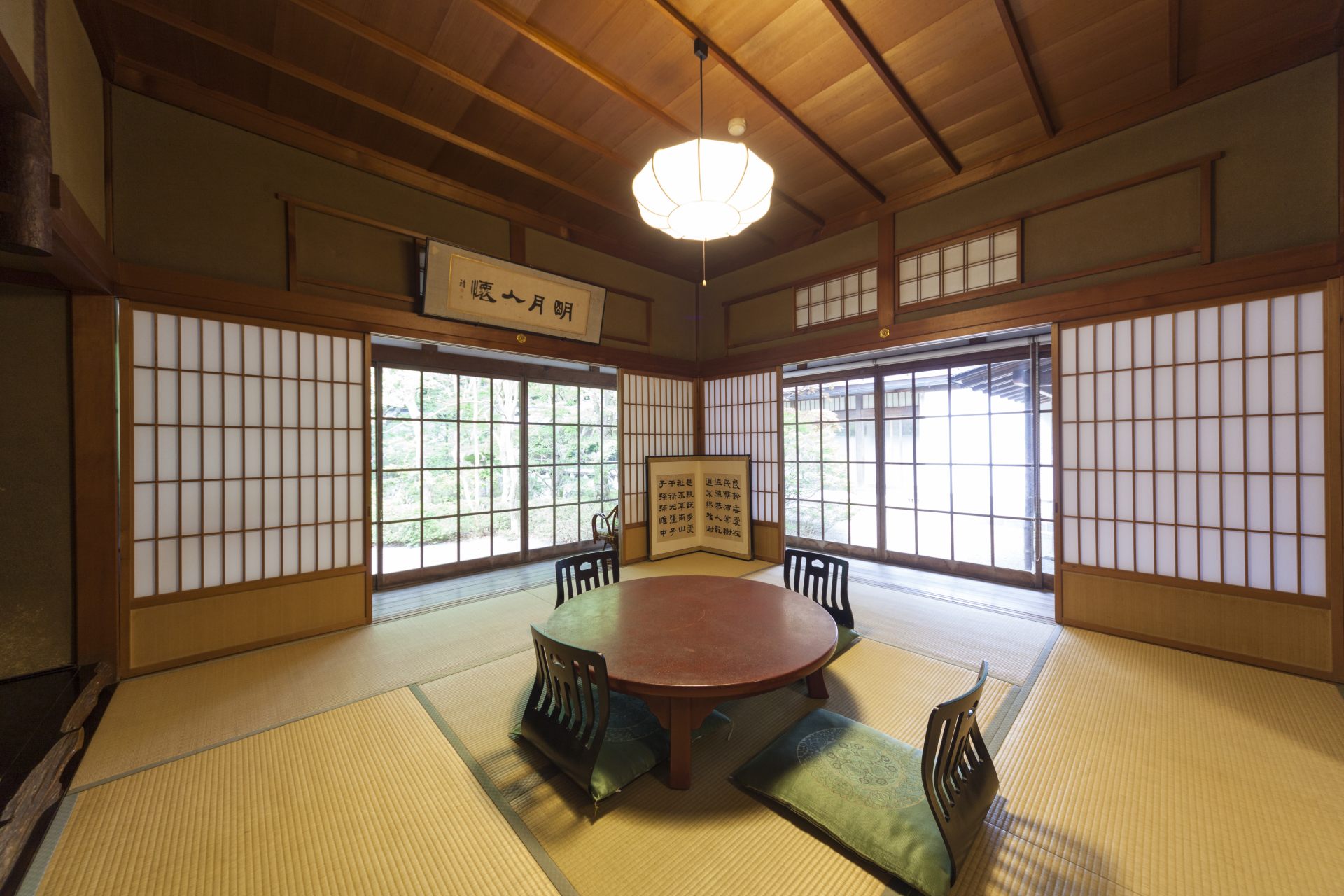
One example of the guest rooms. Find yourself enwrapped in traditional Japanese charm.
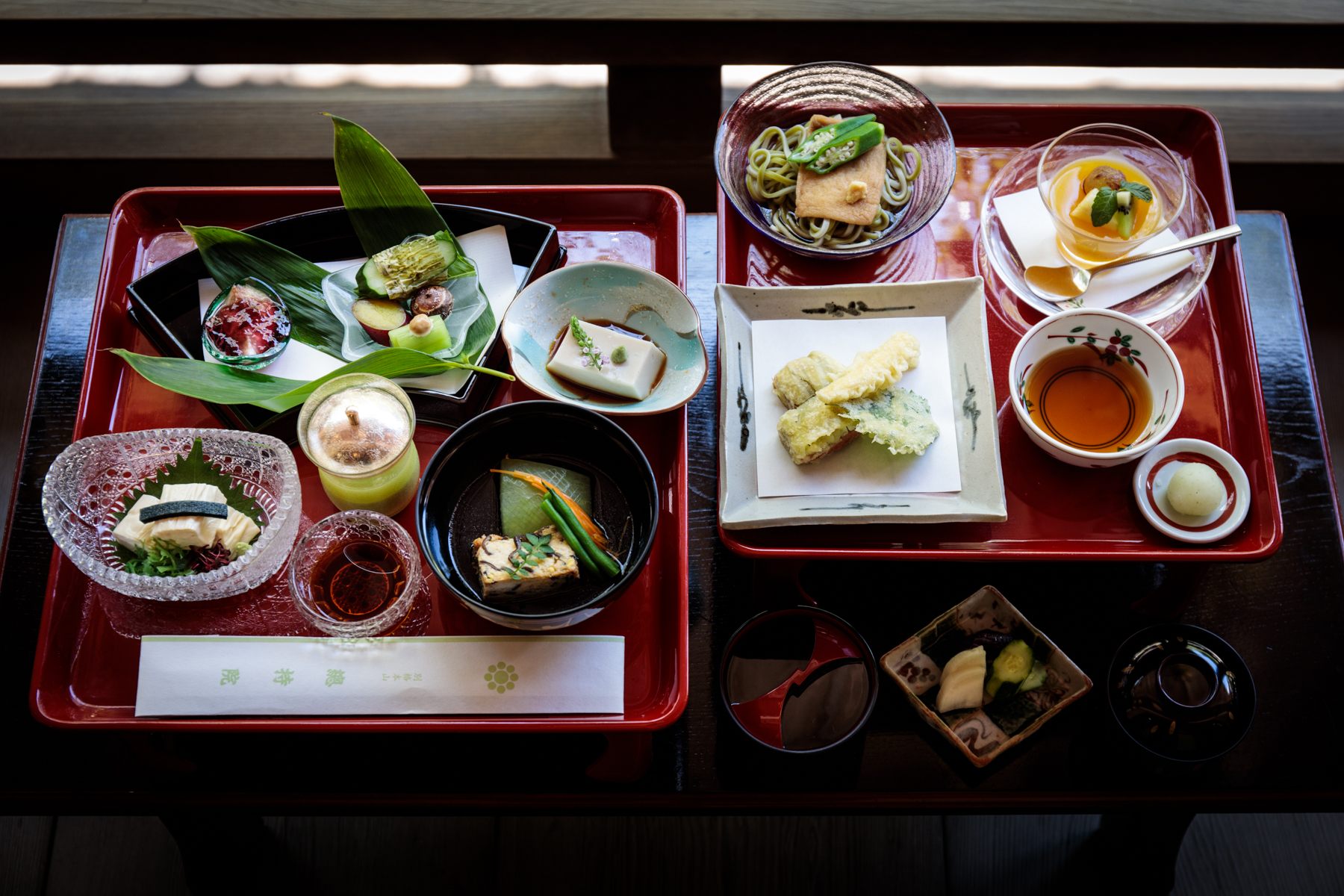
An example of traditional shojin ryori—traditional Buddhist cuisine comprised of nutritious and richly flavorful dishes.
- Inquiries
- 0736-56-2616 (Koyasan Shukubo Association)
- Reservations
- To reserve, contact the Koyasan Shukubo Association or the shukubo facility directly.
- Fare
- Differs per shukubo facility.
Check also...
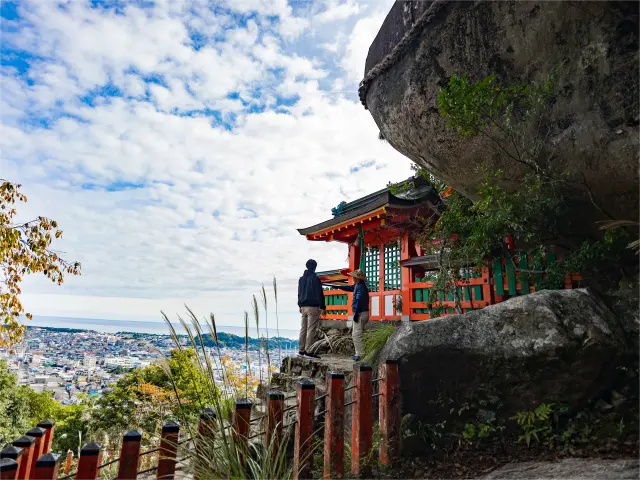
Wakayama: A World Heritage Site and Journey of Deep Mystique at the Kumano Kodo
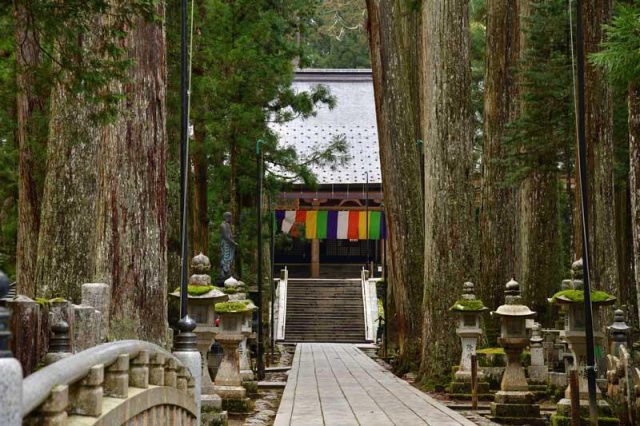
Can You Really Stay in a Temple? 4 Great Buddhist Ascetic Experiences Are Waiting for You at the Mount Koya World Heritage Site
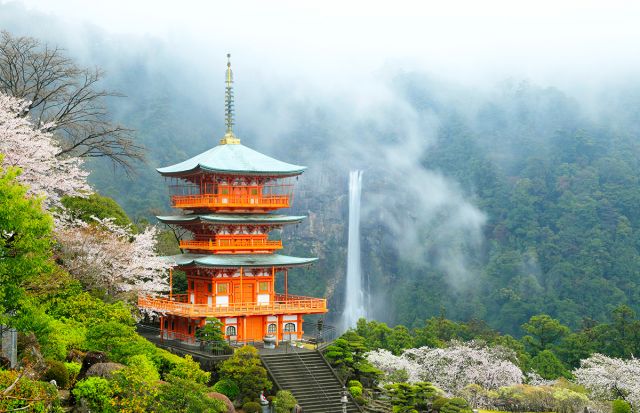
A Journey for Preparing for Death over 1300 Years~The Saigoku Kannon Pilgrimage of thirty-three Buddhist temples throughout the Kansai region of Japan~
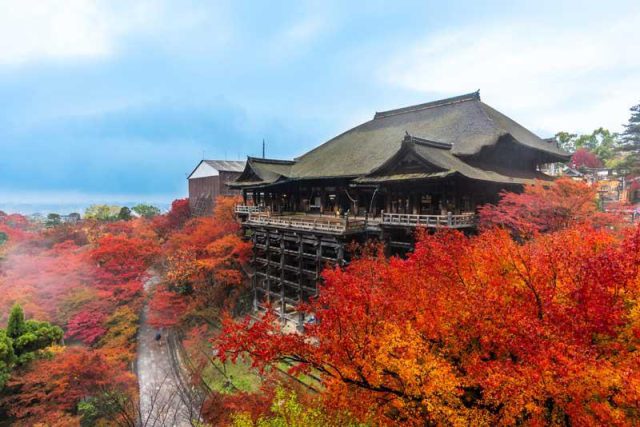
Don’t Clap Your Hands When Praying? Japanese Temple Manners + 5 Must-Visit Temples in the Kansai Area
![Take a leisurely stroll in the retro and fashionable space [Kuroe, the town of Kishu lacquerware]](/kansaiguide/data/article/21000/20278/20250618_133123_770e1e88_w640.webp)
Take a leisurely stroll in the retro and fashionable space [Kuroe, the town of Kishu lacquerware]

Consider your accommodation in the Kansai area!

Restrictions on Large Baggage

